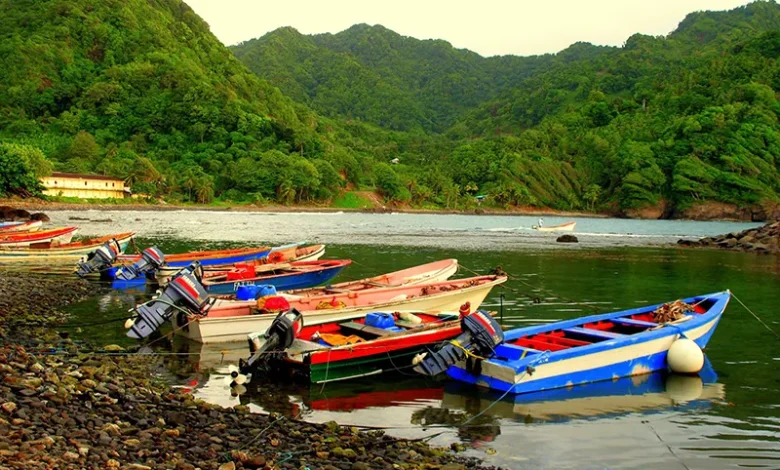Fishing Villages in Dominica

Fishing villages in Dominica form the backbone of coastal life, sustaining families, traditions, and food systems across the island. Located on Atlantic and Caribbean coasts, these communities reflect centuries-old practices of artisanal fishing passed down through generations. From hand-line fishing at sunrise to communal fish sales on sun-drenched beaches, these villages embody resilience, adaptability, and cultural pride.
Caribbean Coast: Calm Waters and Cultural Strongholds
The calmer Caribbean coast is home to some of Dominica’s most established fishing communities. Soufrière, Scotts Head, Newtown, Colihaut, Dublanc, Bioche, and Mahaut rely heavily on inshore fishing and near-daily landings.
In Soufrière and Scotts Head, part of the Soufrière Scotts Head Marine Reserve, residents balance fishing with marine conservation. Nets are hauled in by hand, and fish are cleaned and sold just steps from where they’re caught. In Newtown, the Newtown Fisheries Complex provides cold storage, sanitation facilities, and cooperative support via the Newtown Fisheries Cooperative, ensuring both safety and sustainability.
Farther north, Colihaut, Dublanc, and Bioche maintain strong community ties and rely on beach-based operations with wooden boats and traditional traps. Portsmouth, anchored by the Portsmouth Fisheries Complex, supports large-scale operations and distributes fresh catch through the Portsmouth Market and surrounding districts.
Atlantic Coast: Tougher Seas, Deeper Roots
The Atlantic coast demands greater endurance, with stronger currents and fewer natural harbors. Still, villages like Marigot, Wesley, Castle Bruce, and San Sauveur persist through generations of coastal life.
Marigot, positioned near the Douglas-Charles Airport and landmarks like Sam’s Gutter, is known for its combined focus on farming and fishing. Fishermen here work in groups, often sharing equipment and fuel. In Castle Bruce, fishing is deeply intertwined with inland farming, creating a dual-income strategy for survival.
Key Facilities Supporting the Sector
Dominica’s fishing economy benefits greatly from a small but essential network of fisheries infrastructure:
- Newtown Fisheries Complex: Supports southern communities with cold storage, ice production, and sanitation.
- Portsmouth Fisheries Complex: Services the north with dock space and bulk handling operations.
- Newtown Fisheries Cooperative: Offers fuel assistance, equipment access, and training in sustainable fishing.
- Village landing sites: In places like Toucari, Bioche, and Capuchin, simple beach pull-ups and riverside spots remain active.
These facilities allow even the smallest fishing operations to remain viable while maintaining food supply chains across the island.
Livelihoods, Identity, and Cultural Rituals
Fishing in Dominica isn’t just about sustenance—it’s cultural DNA. From daily routines to religious processions and village feasts, the rhythm of life in fishing communities often matches the tides. In Toucari and Capuchin, fishers still tell stories of ancestral waters and offer respect to marine spirits before launching their boats.
Women also contribute significantly, particularly in processing and selling fish, managing the markets, and preserving dried or salted seafood for inland sale. These roles are essential and form part of the unspoken economic structure of every fishing village.
Facing the Future: Challenges and Adaptation
Dominica’s fishing villages are navigating multiple challenges—from rising fuel costs to coastal erosion and overfishing. Climate change has intensified storm activity, impacting both the safety of nearshore fishing and the integrity of traditional landing points.
Still, with strong community leadership, support from local cooperatives, and increased awareness of sustainable marine practices, these villages continue to adapt. Government initiatives, partnerships with NGOs, and efforts tied to marine protected areas are paving the way for a balanced future.




